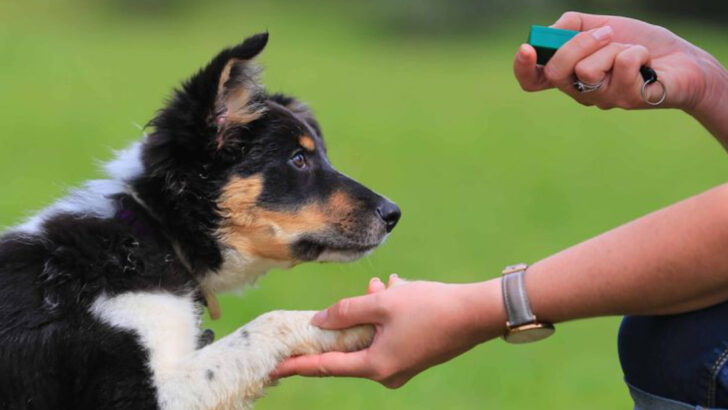Yelling at your dog is not the secret to obedience—it’s a one-way ticket to frustration (for both of you).
Dogs don’t respond to volume; they respond to leadership, consistency, and the right kind of motivation. If you’ve ever felt like your dog has selective hearing, don’t worry—you’re not alone. The good news? You don’t need to raise your voice to get results.
With the right techniques, your dog will actually want to listen. Whether you’re dealing with a stubborn pup or just fine-tuning good behavior, there are smarter ways to get their attention—without stress, guilt, or shouting matches.
Ready to turn chaos into calm? These 22 training tips will transform your approach, strengthen your bond, and get your dog listening like a pro—all while keeping the peace.
Consistency Is Key
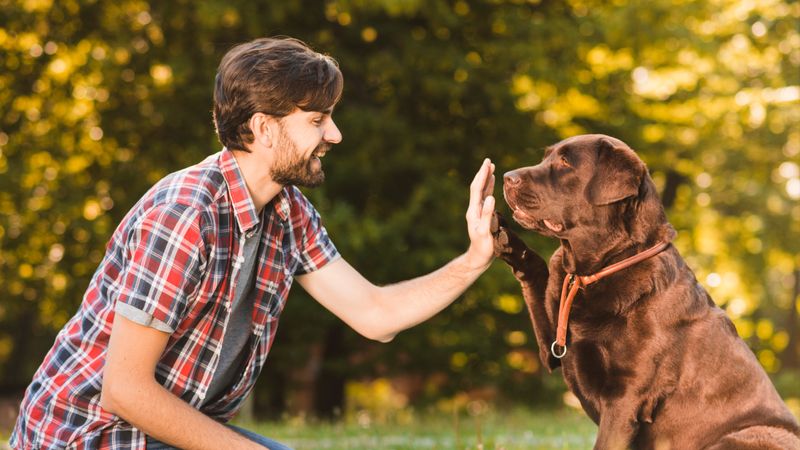
Consistency forms the backbone of effective dog training. By maintaining uniform commands and routines, your dog learns what is expected. Regular training sessions help reinforce these expectations. Begin each session with a clear plan, focusing on specific behaviors you wish to encourage. Inconsistencies can confuse your dog, leading to frustration for both parties. Therefore, ensure that all family members are aligned in their approach to commands and rewards. This united effort fosters a stable environment where your dog can thrive and respond positively. Consistency reduces stress, making training a pleasant experience.
Positive Reinforcement
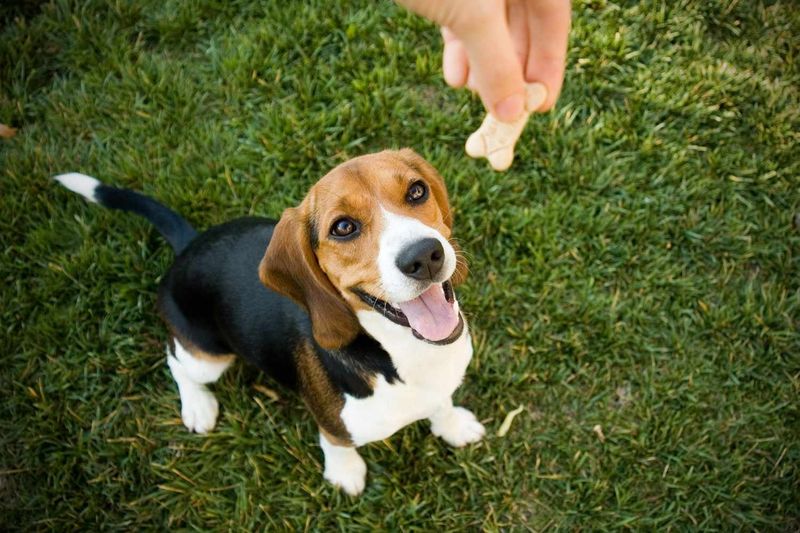
Positive reinforcement is a powerful tool in training. Rewarding your dog for good behavior encourages them to repeat it. Use treats, praise, or playtime as rewards to motivate your pet. This approach builds a positive association with commands, enhancing their willingness to listen. It’s crucial to time the reward immediately after the desired behavior, ensuring your dog links the two. Avoid reprimands with this method, as they can cause anxiety. Instead, focus on acknowledging the good. This nurturing strategy encourages a strong bond between you and your dog, making training enjoyable for both.
Understand Your Dog’s Signals
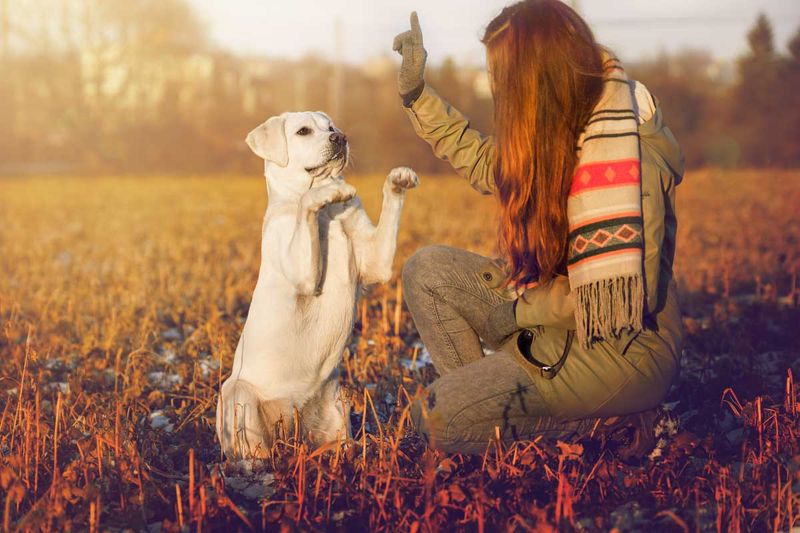
Understanding your dog’s signals is vital in responding appropriately. Dogs communicate through body language, and recognizing these signals can guide your training approach. Observing signs of stress, such as yawning or a tucked tail, allows you to adjust your methods, ensuring a comfortable environment. Similarly, signs of relaxation, like wagging tails or a happy demeanor, indicate contentment. Being attuned to these signals helps in making informed decisions during training. This awareness fosters a respectful and empathetic relationship, reducing the likelihood of stress-induced reactions. Acknowledging your dog’s cues strengthens communication and trust.
Use Clear Commands
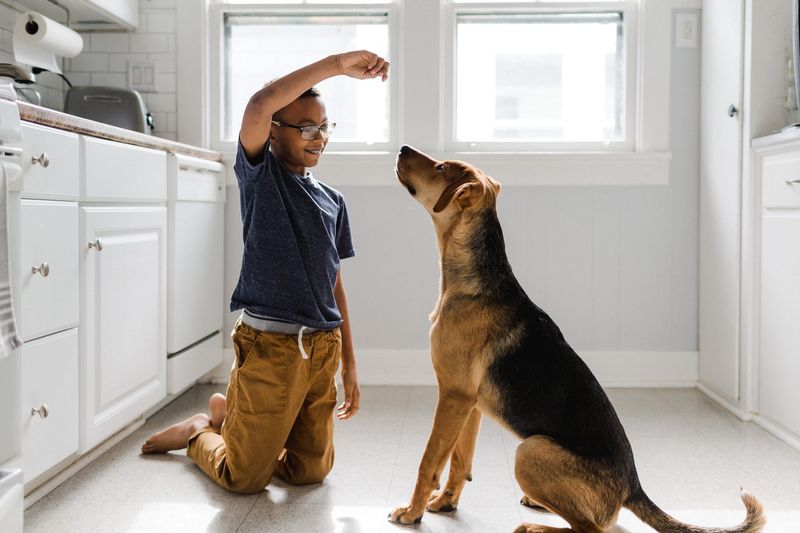
Clear commands simplify communication, helping your dog understand expectations. Using simple, concise words ensures your dog doesn’t become confused. Avoid lengthy explanations; instead, stick to one-word commands like “sit” or “stay.” Consistent tone and volume also matter, as they help your dog recognize the command quickly. When introducing new commands, be patient and repeat them until your dog responds correctly. Clear communication reduces frustration for both you and your dog, making training a more enjoyable experience. This straightforward approach enhances your dog’s ability to learn effectively and respond promptly.
Short Training Sessions
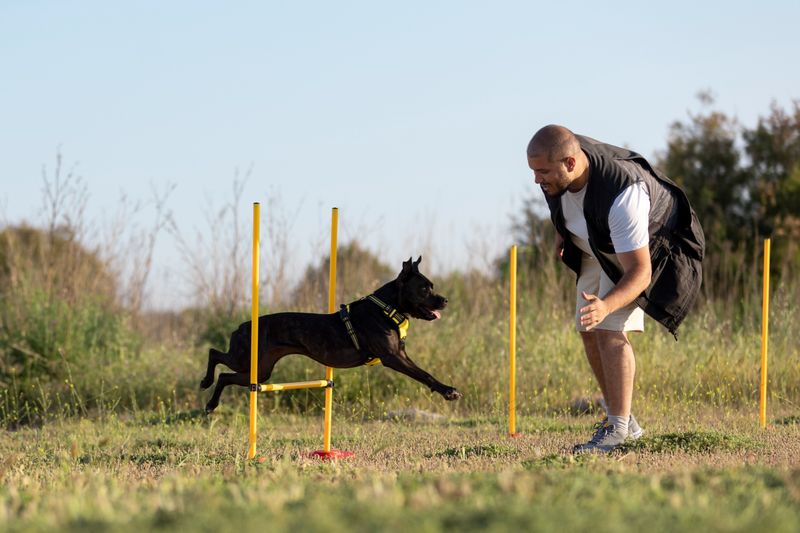
Short training sessions keep your dog engaged and attentive. Dogs often have limited attention spans, so concise sessions prevent fatigue and maintain focus. Aim for training periods of 5 to 10 minutes, allowing your dog to absorb new information without becoming overwhelmed. Frequent, brief training ensures consistent reinforcement without the risk of overstressing your dog. During these sessions, concentrate on one command or behavior, gradually building upon it. This method encourages learning through repetition and reinforcement, creating a positive association with training. Short sessions foster enthusiasm and eagerness to learn in your dog.
Patience Is Essential
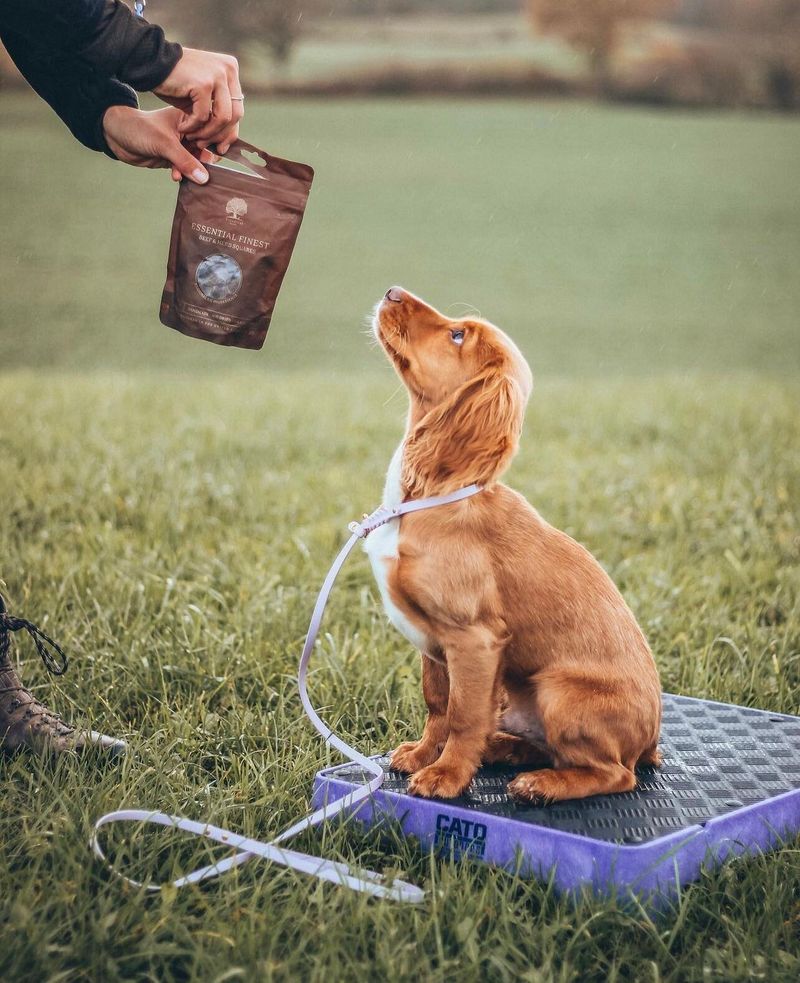
Patience forms the cornerstone of effective dog training. Dogs learn at their own pace, and rushing the process can lead to stress and confusion. It’s important to celebrate small victories, recognizing that progress may be gradual. Remain calm and composed, even when your dog struggles to grasp a command. This patience encourages a positive learning environment, where your dog feels supported and understood. With time, persistence, and kindness, your dog will begin to respond to commands with confidence. This approach reinforces trust and strengthens the bond between you, making training a rewarding experience.
Avoid Negative Reinforcement
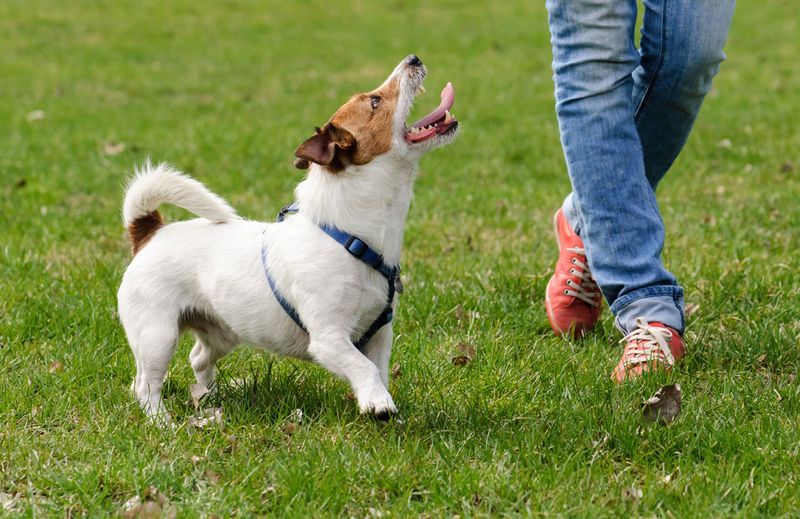
Avoiding negative reinforcement is key to maintaining a stress-free training environment. Instead of punishing unwanted behavior, focus on redirecting your dog towards desired actions. This approach reduces fear and anxiety, promoting a positive atmosphere. Employ strategies like ignoring attention-seeking misbehavior, rewarding alternative behaviors, or using gentle guidance. This way, your dog learns without experiencing negative emotions. Consistently applying these methods helps build trust and respect. When dogs feel safe and supported, they are more likely to engage willingly in training. This nurturing environment fosters learning and strengthens your connection.
Use Hand Signals
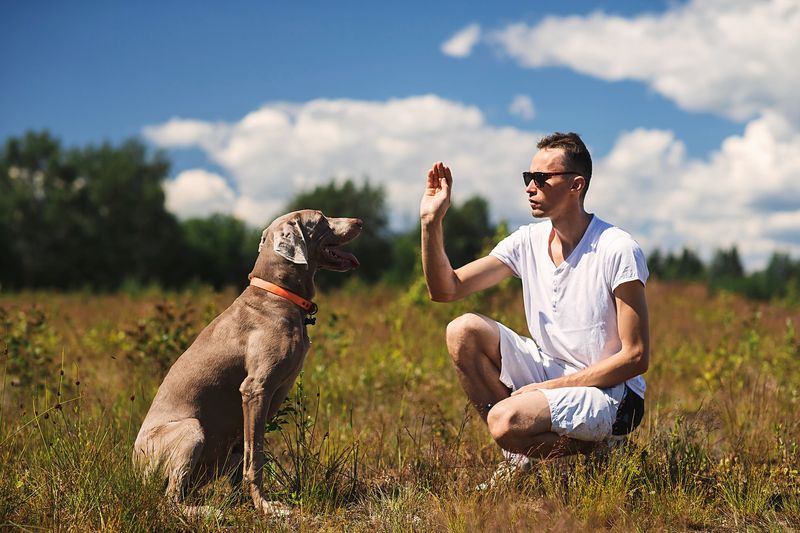
Hand signals complement verbal commands, enhancing communication with your dog. Visual cues can be especially helpful for dogs that are hard of hearing or easily distracted. Start by associating a specific hand signal with a verbal command, practicing consistently. Dogs often pick up visual signals quickly, responding well to this method. Over time, your dog may even respond to hand signals alone, demonstrating their understanding. This dual approach reinforces commands, providing a clear and effective way to communicate. Incorporating hand signals into training ensures a versatile and inclusive teaching method, benefiting both you and your dog.
Create a Routine
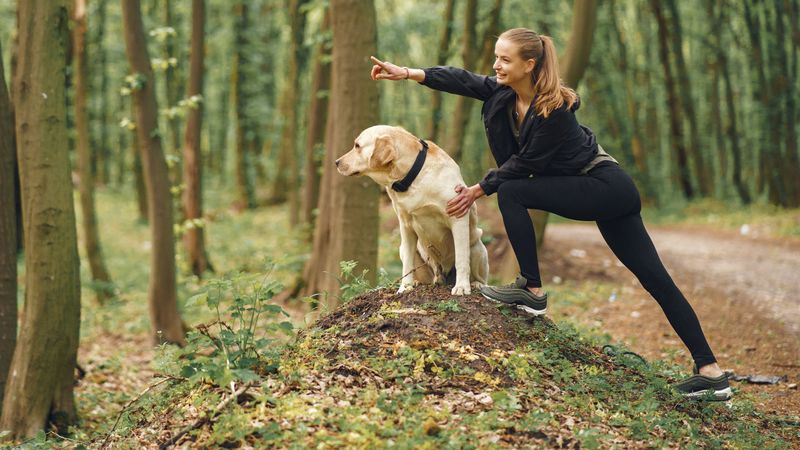
Creating a routine helps your dog anticipate and understand what’s expected of them. Regular schedules for feeding, walks, and training sessions create a sense of structure, reducing anxiety. Dogs thrive in predictable environments, and a consistent routine fosters a feeling of security. Incorporate training into daily activities, making it a regular part of your dog’s life. This approach ensures frequent practice, reinforcing learned behaviors. A routine provides stability, helping your dog feel at ease and willing to learn. By integrating training into everyday life, you build a harmonious and well-behaved companion.
Socialization Opportunities
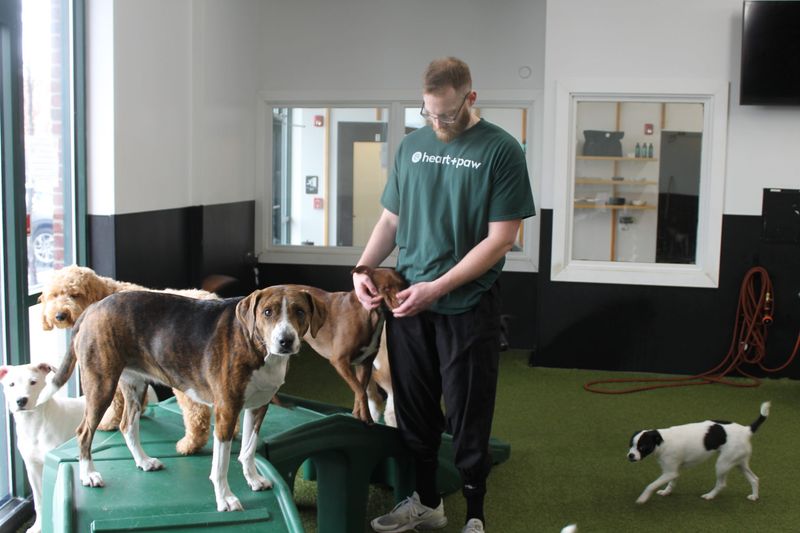
Socialization is crucial for a well-rounded dog. Exposing your dog to various environments, people, and other animals reduces fear and anxiety. Arrange playdates with other friendly dogs, visit parks, or invite guests over to interact with your pet. These experiences teach your dog to remain calm and composed in different situations. Socialization also enhances your dog’s ability to follow commands amid distractions. Gradually increase exposure to new experiences, ensuring they’re positive. A well-socialized dog is more confident and responsive, benefiting from diverse encounters. This social aspect enriches training and strengthens your dog’s adaptability.
Use Interactive Toys
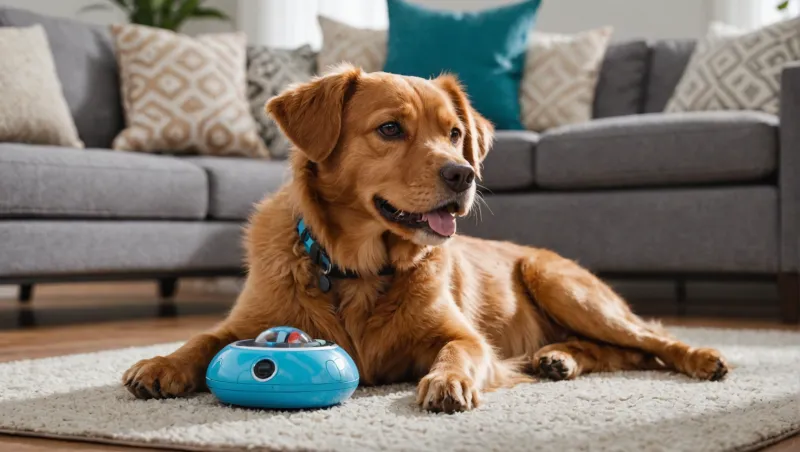
Interactive toys stimulate your dog’s mind, providing both entertainment and education. Toys like puzzles or treat dispensers challenge your dog’s problem-solving skills, keeping them engaged. This mental stimulation is essential for preventing boredom and destructive behavior. Incorporating interactive toys into training sessions adds variety and fun, encouraging your dog to participate eagerly. These toys can reinforce commands and improve focus, as your dog learns through play. Regularly rotate toys to maintain interest, ensuring ongoing engagement. Using interactive toys creates a dynamic and rewarding training experience, promoting both mental and physical well-being.
Set Realistic Goals
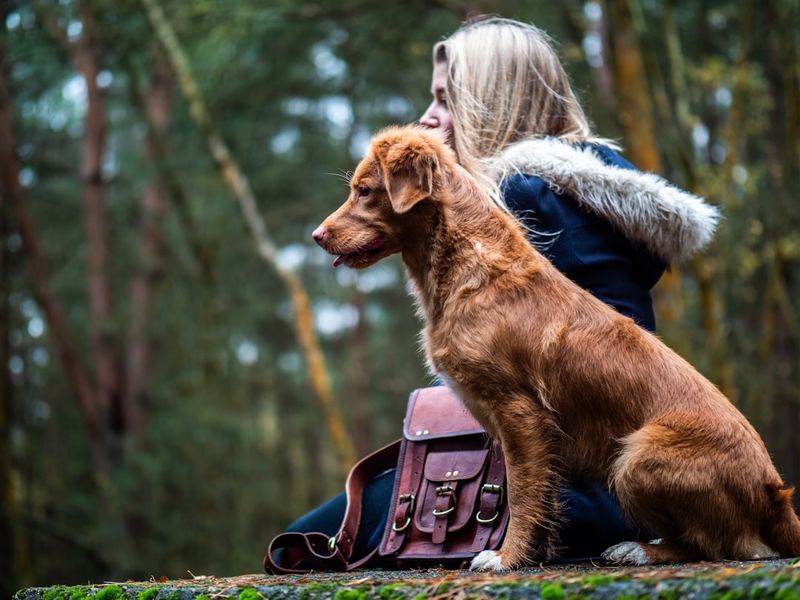
Setting realistic training goals ensures a manageable and rewarding process for both you and your dog. Break down complex behaviors into smaller, achievable steps. Celebrate progress and recognize achievements, no matter how small. This approach keeps motivation high, reducing frustration. Understanding your dog’s capabilities allows you to tailor goals to their pace, fostering confidence. Focus on gradual improvement, rather than perfection. Adjust goals as needed, remaining flexible and responsive to your dog’s progress. Setting realistic expectations strengthens the training bond, encouraging a positive and enduring relationship between you and your canine companion.
Reward Calm Behavior
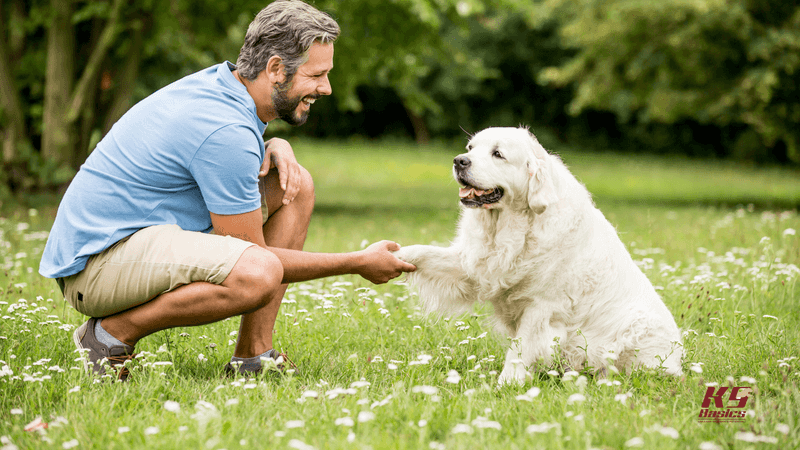
Rewarding calm behavior reinforces a peaceful demeanor in your dog. Acknowledging moments of tranquility with praise or treats encourages this state. By focusing on calmness, you teach your dog that relaxed behavior is desirable. This practice reduces hyperactivity and promotes a serene environment. It’s important to recognize and reward calmness consistently, reinforcing this behavior over time. Calm dogs are more receptive to training, allowing for smoother sessions. This method nurtures a harmonious relationship, where your dog feels valued and understood. Rewarding calm behavior is a fundamental step in creating a cooperative and content pet.
Incorporate Playtime
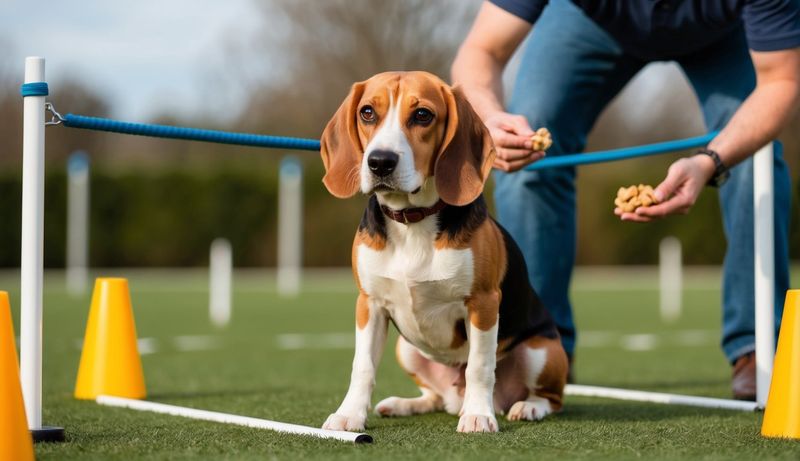
Incorporating playtime into training keeps sessions enjoyable and light-hearted. Play is a natural way for dogs to learn and practice commands. Integrate games like fetch or hide-and-seek to make training fun. This approach keeps your dog motivated and engaged, blending work with play. Playful training strengthens the bond between you, building trust and connection. It also serves as a reward, reinforcing positive behavior in an enjoyable way. Balancing training with playtime ensures sessions remain dynamic and lively. This engaging method encourages your dog to view training as a positive, rewarding experience, enhancing their receptiveness.
No Yelling or Intimidation
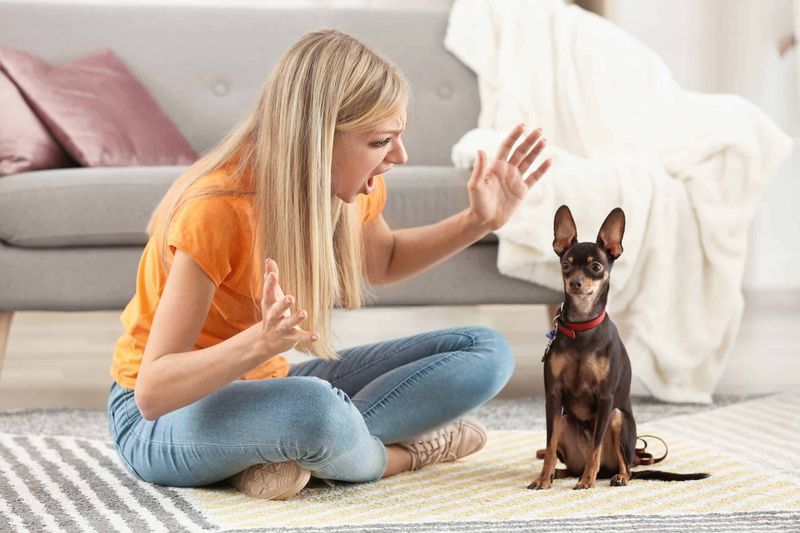
Avoiding yelling or intimidation is crucial for stress-free training. Loud voices or aggressive behavior can frighten your dog, hindering their willingness to learn. Instead, focus on calm and gentle communication, using a firm yet reassuring tone. This approach builds trust and encourages cooperation, as your dog feels safe in their learning environment. Consistency in tone and demeanor helps your dog understand and respond positively. Training should be a peaceful and supportive experience, free from fear or anxiety. By fostering a calm atmosphere, you nurture a confident and attentive companion, eager to engage in training.
Know Your Dog’s Limits

Recognizing your dog’s limits is essential for effective training. Every dog has a unique threshold for learning and patience. Pushing beyond these limits can result in stress or reluctance. Pay attention to your dog’s signals, adjusting the pace and intensity of training accordingly. This awareness ensures your training sessions remain productive and positive. Respecting your dog’s boundaries fosters trust and reduces anxiety, encouraging a willing learner. Gradually increase challenges, while always being mindful of your dog’s comfort. This considerate approach leads to a more harmonious training experience, promoting a strong and trusting relationship.
Use Clicker Training
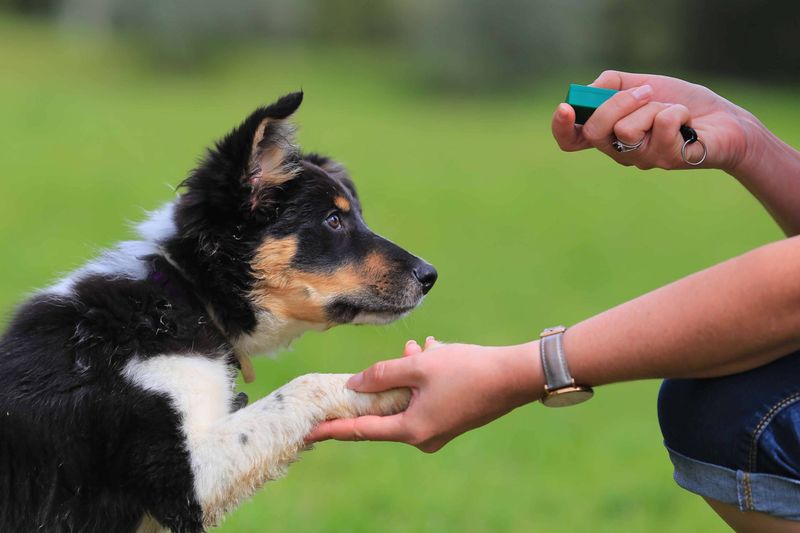
Clicker training offers a precise method for marking desired behavior. The sound of the clicker becomes an instant signal to your dog that they’ve done something right. Coupled with a reward, this method reinforces learning effectively. Start by associating the sound with a treat, then use it to mark good behavior. The clicker provides clear and immediate feedback, helping your dog learn swiftly. This technique enhances communication and improves your dog’s responsiveness to commands. Clicker training is a versatile tool, suitable for various behaviors and settings. It fosters an engaging and enjoyable training environment.
Teach One Command at a Time
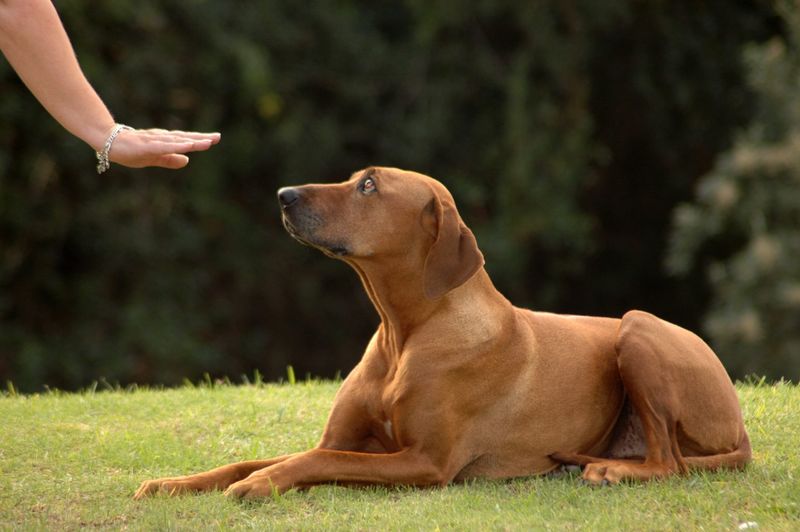
Focusing on one command at a time allows for efficient learning. Introducing multiple commands can confuse your dog, diluting the effectiveness of training. Begin with simple, foundational commands, ensuring your dog masters each one before moving on. This focused approach reinforces learning, building a strong foundation for future training. Patience is key, as repetition helps your dog internalize commands. Gradually introduce new commands as your dog becomes proficient. This method reduces stress and promotes clarity, enhancing your dog’s ability to understand and respond. Concentrating on one command fosters a confident and capable canine companion.
Use Treats Wisely
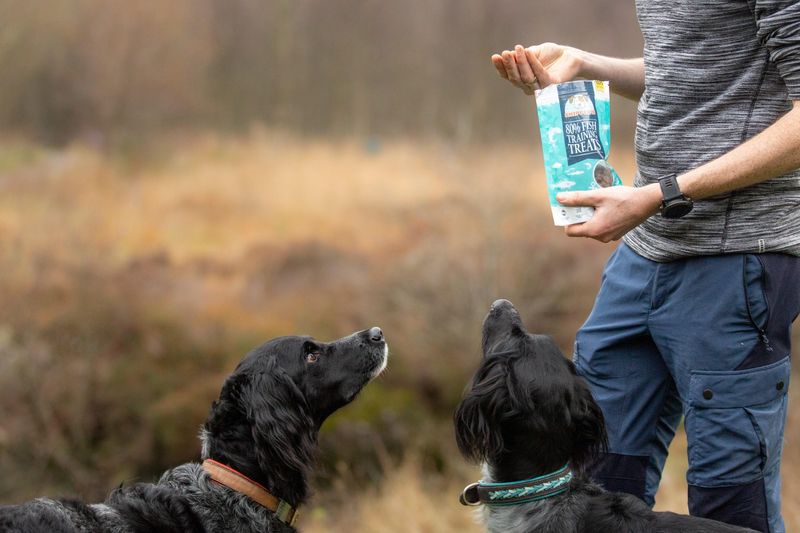
Using treats wisely is vital for effective training. Treats should serve as a reward, not a bribe, encouraging positive behavior. Select healthy, low-calorie options to avoid overfeeding. Timing is crucial; offer treats immediately after the desired behavior to reinforce the connection. Gradually reduce treat frequency as your dog becomes more consistent, using praise or play as alternatives. This balanced approach maintains motivation without creating dependency. Be mindful of portion sizes, ensuring treats complement a balanced diet. Using treats wisely fosters a healthy and motivated learner, eager to participate in training sessions.
Environment Matters
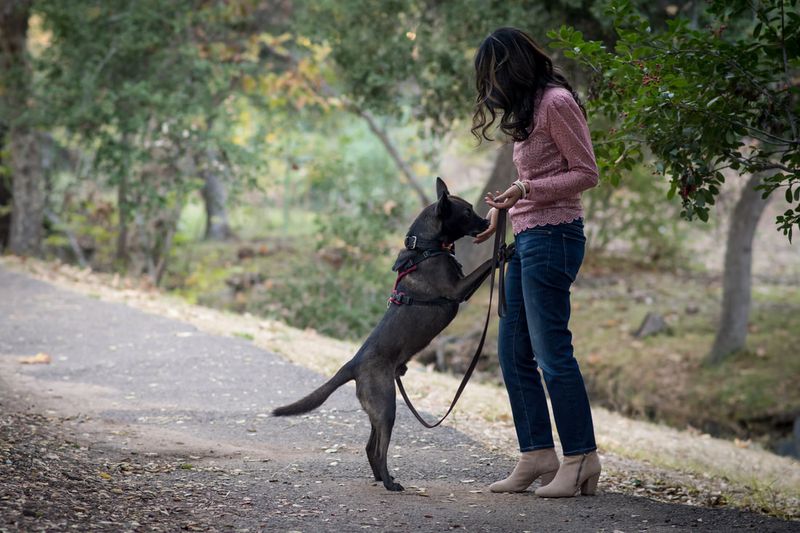
Creating a conducive environment enhances learning. Choose a quiet, distraction-free area for training sessions, allowing your dog to focus. As your dog becomes more proficient, gradually introduce controlled distractions to build adaptability. The right environment minimizes stress, fostering a calm and attentive learner. Consider factors like lighting, sound, and space, ensuring they support your dog’s comfort and concentration. This thoughtful approach lays the foundation for successful training, as your dog associates the space with learning. A well-considered environment encourages focus and receptiveness, leading to more effective and enjoyable training sessions.
Be Flexible and Adaptable
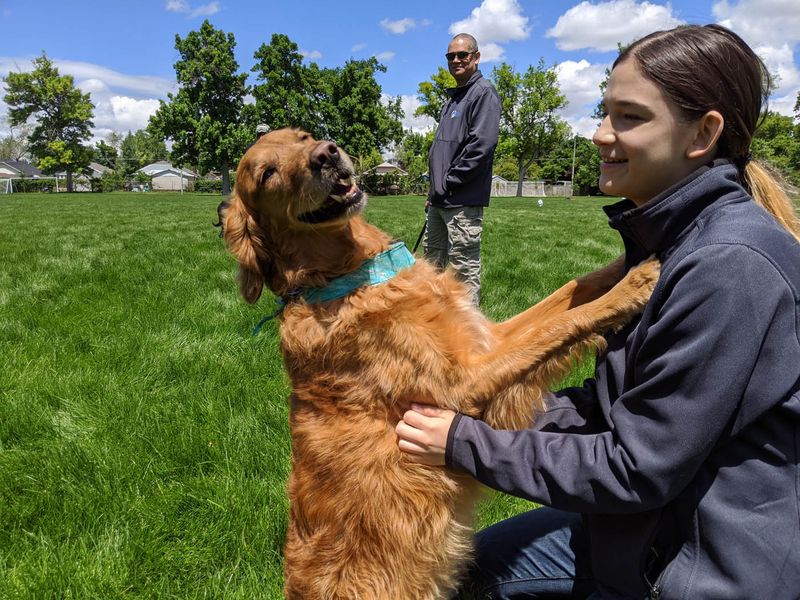
Flexibility in training ensures you cater to your dog’s unique needs. Each dog is different, requiring tailored approaches. Be prepared to adjust techniques and expectations, considering your dog’s personality and progress. This adaptability fosters a supportive learning environment, where your dog feels understood and respected. Monitor your dog’s response to various methods, remaining open to change. Flexibility encourages a dynamic and responsive training process, promoting a positive experience. By adapting to your dog’s needs, you enhance their ability to learn and thrive. This approach strengthens the bond, nurturing a harmonious human-canine relationship.
Celebrate Successes
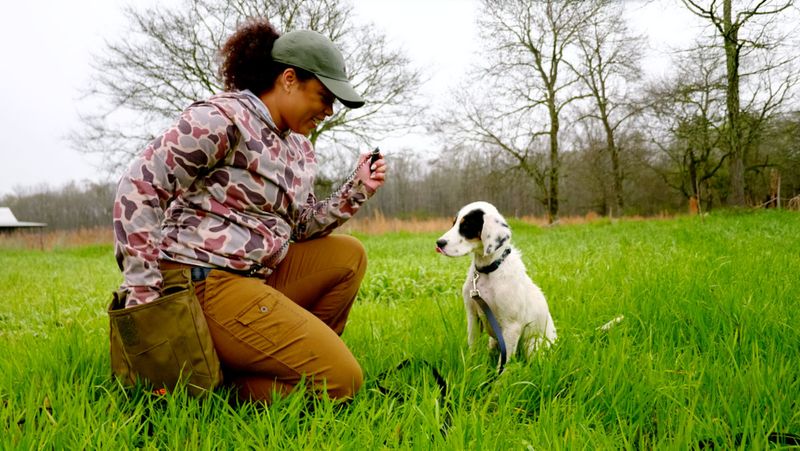
Celebrating successes, no matter how small, boosts motivation and confidence. Recognize and reward your dog’s achievements, reinforcing their progress. This positive reinforcement encourages further learning, as your dog associates training with joy and satisfaction. Celebrations can include treats, praise, or play, adding excitement to training sessions. Acknowledging successes fosters a positive atmosphere, where your dog feels valued and motivated. This practice strengthens the bond through shared achievements, enhancing the training experience. By celebrating together, you create a joyful and encouraging environment, leading to a happy and well-trained companion.

